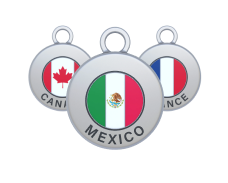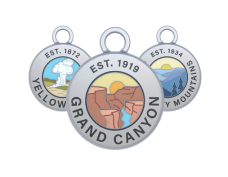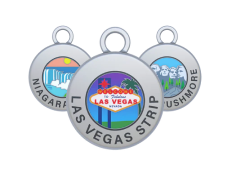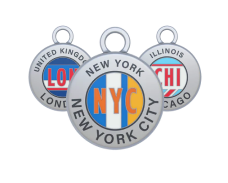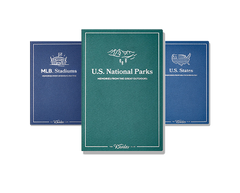
En honor al Día de la Tierra (dato curioso: siempre cae el 22 de abril), nunca ha habido un mejor momento para ponerse las botas de montaña, salir y practicar los Siete Principios de LNT.
Pero espere... ¿qué es exactamente LNT? Los excursionistas experimentados, los exploradores de zonas agrestes y otros entusiastas de las actividades al aire libre probablemente estén familiarizados con la filosofía, pero para quienes no la conozcan, permítanos explicarle.
LNT, u oficialmente, Leave No Trace (No dejar rastro ), puede considerarse como la versión 2.0 de “dejar solo huellas”. Básicamente, significa minimizar nuestro impacto en la Madre Naturaleza para proteger y preservar los recursos naturales.
Si recién escuchas hablar de LNT por primera vez, es posible que te preguntes: "¿Por qué es importante no dejar rastro?" Aquí respondemos a esa pregunta y ofrecemos varias sugerencias y consejos para implementar este concepto sustentable.
¿Qué es LNT?

Primero lo primero, respondamos la pregunta principal: ¿qué es LNT ?
LNT, también conocido como Leave No Trace, es un código de ética para cualquier persona que pase tiempo al aire libre . “Al aire libre” significa literalmente cualquier lugar al aire libre, ya sea un parque comunitario local, un parque nacional o un bosque, un río o un lago, un sendero para bicicletas urbano o un campamento en el interior del país.
Establecido por el Centro Leave No Trace para la Ética al Aire Libre, LNT consta de siete principios claros y fáciles de seguir .
1. Principio 1 de LNT: Planificar con anticipación y prepararse
Piensa en cómo te prepararías para un viaje internacional: ¿Pasaporte? Listo. ¿Visa? Listo. ¿Un itinerario espectacular? También listo.
Aventurarse en la naturaleza, incluso por poco tiempo, requiere el mismo nivel de planificación. Invierta tiempo en investigar y prepararse para garantizar la seguridad de su grupo y, al mismo tiempo, proteger el medio ambiente.
Ponga en práctica este principio de LNT: investigue exhaustivamente su destino e identifique objetivos claros para el viaje. Lleve ropa y equipo adecuados para una variedad de condiciones climáticas y tenga al menos un plan B. Nunca se sabe cuándo un sendero o un campamento está cerrado o puede encontrarse con algo más imprevisto.
2. Principio 2 de LNT: Viajes y campamentos sobre superficies duraderas
Más allá de las vistas espectaculares, el objetivo de cada aventura en el interior del país es dejar intacto el hábitat natural de la zona. Las agencias de gestión de tierras desarrollan y construyen senderos que tienen un impacto mínimo en el medio ambiente, así que manténgase en estos caminos y en los sitios de campamento designados.
Ponga en práctica este principio de LNT: en caso de que se aventure fuera del sendero, elija superficies duraderas como rocas, arena y grava que resistan mejor el desgaste. Nunca pise tierra viva, vegetación o fuentes de agua.

3. Principio 3 de LNT: Eliminar los residuos de forma adecuada
Este tercer principio es el que suele venir a la mente cuando uno se pregunta qué es LNT. “Empaquetarlo, empaquetarlo” es la columna vertebral del lema de No dejar rastro.
Probablemente ya sabes que debes llevar los desechos de comida y otra basura a casa, pero este principio LNT se aplica a todo , incluidos los desechos humanos.
Implementa este principio de LNT : lleva siempre una pala en tus aventuras al aire libre (nos encanta esta versión plegable de Coleman ) y, cuando la naturaleza te llame, cava un pequeño hoyo al menos a 200 pies de fuentes de agua, senderos para caminatas y lugares para acampar. Cubre el hoyo y luego guarda el papel higiénico.
Consejo profesional: ¡guarde las bolsas de plástico del supermercado para este propósito y siempre use bolsas dobles!
4. Principio 4 de LNT: Deja lo que encuentres
Por más bonitas que puedan lucir expuestas en su hogar, las rocas, ramas, flores y hojas interesantes son cruciales para el ecosistema.
Llevarse a casa “souvenirs” de la Madre Naturaleza es devastador para la flora y la fauna que dependen de ellos para sobrevivir. Incluso grabar sus iniciales en el tronco de un árbol o apilar piedras para formar un montículo puede dañar el delicado entorno y provocar su descomposición.
Ponga en práctica este principio de LNT: los mejores lugares para acampar se encuentran, no se construyen. Estacione, arme su tienda de campaña y encienda su fogata en áreas bien establecidas, siempre que sea posible.

5. Principio 5 de LNT: Minimizar los impactos de las fogatas
Si quieres un buen ejemplo de por qué es importante no dejar rastro, mira las fogatas.
Podría decirse que es uno de los mejores aspectos de acampar. Sin embargo, también puede ser extremadamente peligroso. Cada año, miles de hectáreas de bosque son destruidas por incendios forestales y, a menudo, se inician accidentalmente, a partir de una fogata que se dejó encendida o que se salió de control.
Antes de encender una fogata, realice una evaluación de riesgos: pregúntese si es realmente necesario y si las condiciones son lo suficientemente seguras. También debe familiarizarse con las normas locales sobre incendios.
Recuerde, una fogata aprobada por LNT no mostrará ninguna evidencia de que alguna vez fue construida .
Ponga en práctica este principio de LNT: haga fogatas solo en fogatas o fogatas ya existentes. Siempre apague las llamas con agua y nunca se aleje de un fuego que aún esté ardiendo.
Además, gracias a la llegada de fogatas portátiles y livianas y estufas para acampar, encender fogatas “reales” ya no es una verdadera necesidad, así que cuando las condiciones no sean las adecuadas, no las enciendas .
6. Principio 6 de LNT: Respetar la vida silvestre
Para muchas personas, la mera posibilidad de avistar animales salvajes es un momento inolvidable al pasar tiempo al aire libre. ¿Por qué es importante la política de no dejar rastro en lo que respecta a la vida silvestre? ¡Buena pregunta!
El sexto principio de la LNT nos recuerda que somos huéspedes en el hábitat de los animales y tenemos la responsabilidad de respetarlos. Mantén una distancia segura y nunca interactúes con animales salvajes.
Ponga en práctica este principio de LNT: nunca, jamás, alimente a los animales salvajes. Los animales tienen sus propios métodos innatos para obtener alimentos y alimentarlos provoca una dependencia insegura (por no decir antinatural) de los seres humanos.

7. Principio 7 de LNT: Sea considerado con los demás
No es ningún secreto que pasar tiempo “desconectados” en la naturaleza mejora nuestra salud mental y nuestra función cognitiva . La tecnología ruidosa, como la música que sale de parlantes portátiles, puede afectar negativamente a otras personas que comparten su espacio al aire libre. Familiarícese con los códigos de prioridad de paso para evitar encuentros desagradables.
Ponga en práctica este principio LNT: al pasar a otro excursionista en un sendero angosto, la persona que se dirige cuesta abajo debe hacerse a un lado para permitir que el viajero que sube pueda pasar de manera segura.
¿Por qué es importante no dejar rastro?

A medida que el interés de la gente por las actividades al aire libre continúa aumentando, los 7 principios de LNT son más importantes que nunca.
La falta de cuidado, especialmente en la naturaleza, tiene un impacto directo y catastrófico en la Madre Tierra. Por ejemplo, más del 85% de los incendios forestales en los EE. UU. son causados por la actividad humana.
También podemos estar atentos a la sobrepoblación imprudente que pone en peligro tanto el delicado paisaje natural como las vidas humanas. Para proteger estos dos recursos preciosos, se han implementado sistemas de permisos y reservas en lugares populares como Zion's Angels Landing y la icónica caminata Old Rag en el Parque Nacional Shenandoah .
La próxima vez que surjan preguntas como " ¿qué es LNT? " o " ¿por qué es importante No dejar rastro? ", aproveche la oportunidad para compartir sus conocimientos sobre este importante tema.
Y ya que estamos hablando de aventuras sostenibles, aquí hay algo que quizá no hayas considerado: souvenirs de viaje de impacto mínimo .
Las fichas de viaje y los portafichas de la tienda de Wander Club son portátiles, personalizables y, lo mejor de todo, están hechos de materiales de alta calidad, como cuero vegano y latón macizo. ¡Aquí no hay plástico tóxico de un solo uso!
Con fichas de viaje que conmemoran parques nacionales de EE. UU., lugares famosos e incluso estadios de béisbol , hay algo para todos. ¡Incluso puedes personalizar una (tal vez con la frase "No dejar rastro", por ejemplo)!

